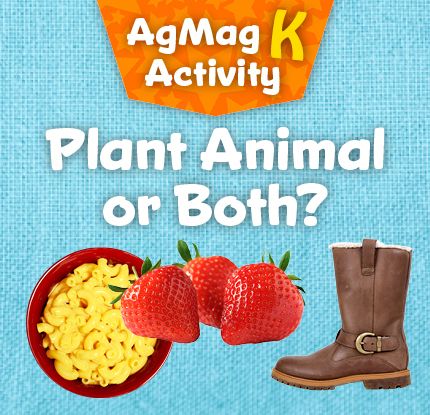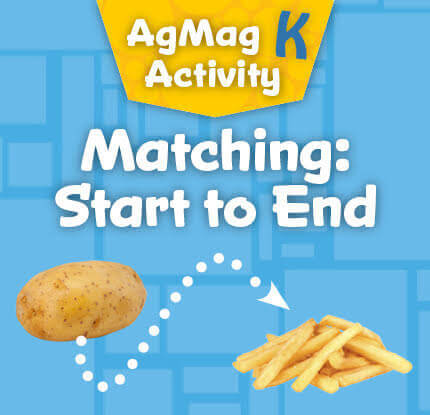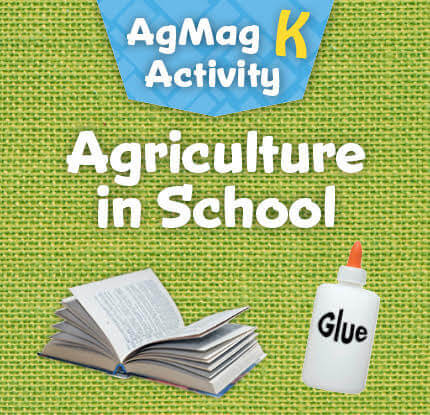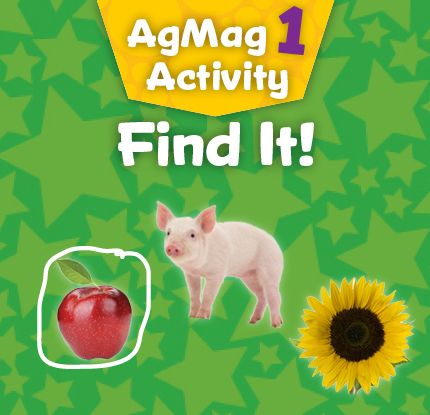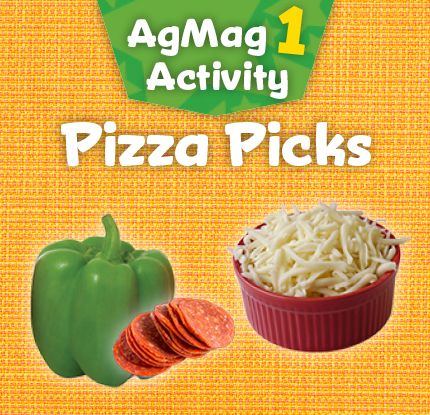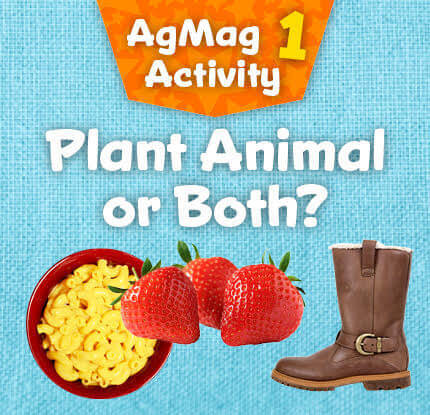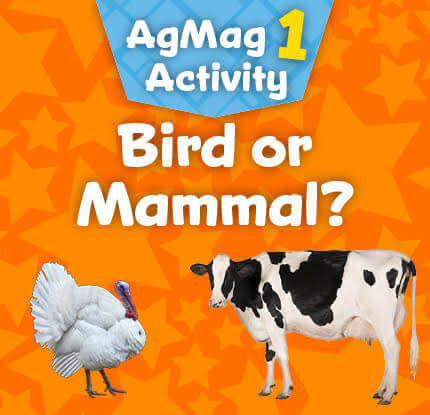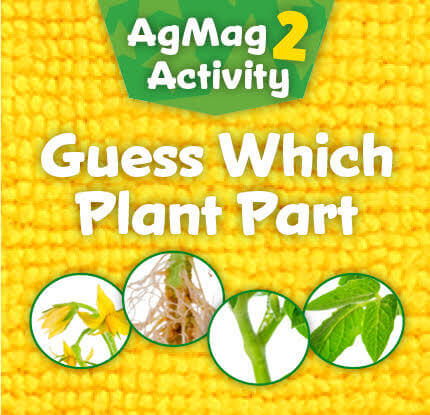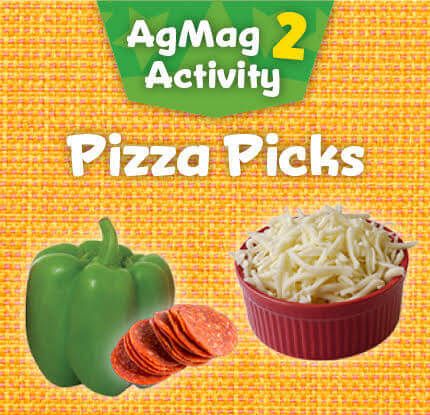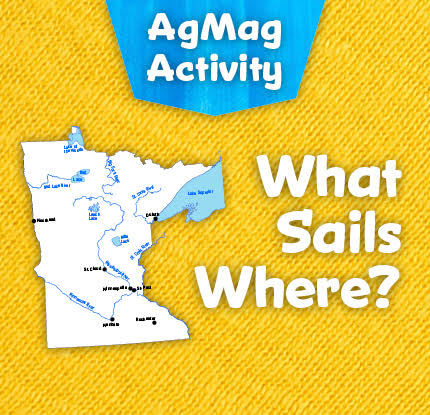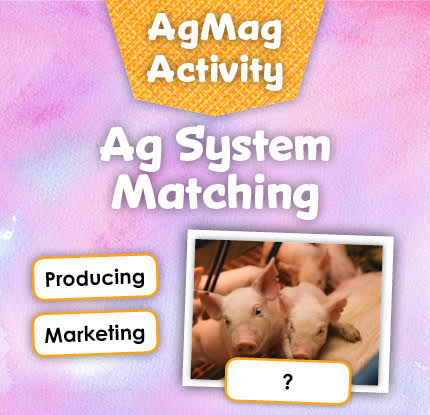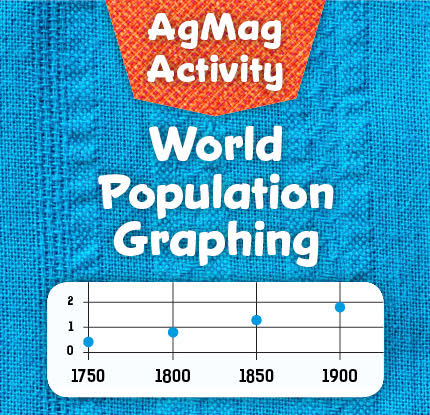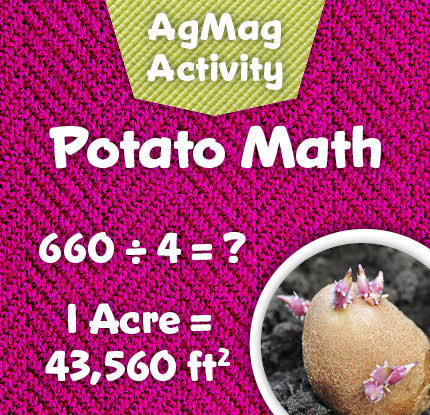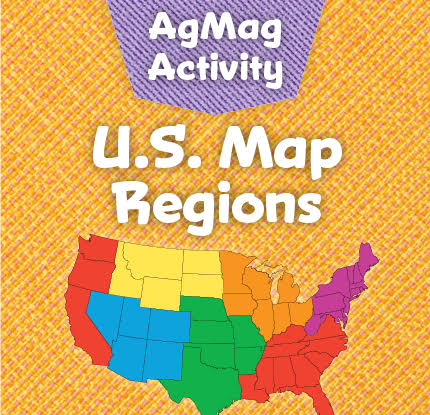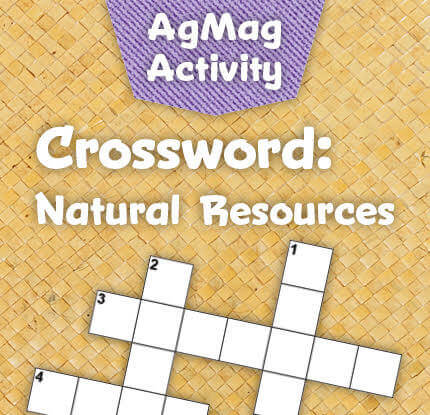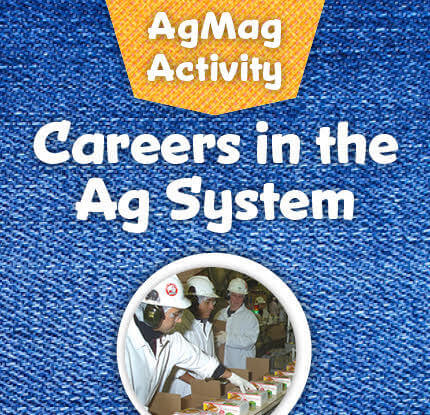AgMag K Fall 2019 Teacher Guide
Started in 1985, the Minnesota Agriculture in the Classroom program (MAITC) is a unique public/private partnership between the Minnesota Department of Agriculture and the MAITC Foundation. The program goal is to advance agricultural literacy to all learners, especially K-12 students and educators. MAITC’s mission is to promote understanding and awareness of the importance of agriculture.
We are pleased to offer the free AgMag series for kindergarten, first, and second grades (AgMag K, AgMag 1, and AgMag 2). Each issue is written and targeted to each specific grade level from K-2 (for 4th-6th grade students, MAITC offers a separate publication called simply AgMag). The magazine is sent early in the school year for beginning readers. Teachers can use it when the reading level of their students matches the reading level of the magazine. We publish two issues each school year, in October and March. Enjoy!
The AgMag K series is made possible due to the generous financial support of Compeer Financial Services, a long-time supporter of the MAITC program.
Why Ag in the Classroom?
Previously, people were very aware of the role agriculture played in their lives: It meant survival. Nearly everyone—men, women, and children—worked the land.
Agriculture still means survival. That will never change. But as time goes on, fewer people have close contact with farming. They’re not aware of their own—and the nation’s—total dependence on agriculture. Think about it:
• Fewer than 2 out of 100 Americans work directly in production agriculture (farming). This small group meets the food and fiber needs of the nation as well as many people abroad.
• Agriculture, along with its related occupations, is the nation’s largest industry. It generates billions of dollars each year. One out of every five jobs depends on it in some way.
Agriculture is constantly changing. But one thing remains the same: Agriculture is a vital part of your day! Even as early as the primary grades, it’s important for students to gain an understanding and appreciation for the ways agriculture touches their lives, each and every day. Food doesn’t magically appear in the grocery store or on the kitchen table. It all starts with agriculture.
Minnesota Academic Standards Connection
|
Subject |
Standard Code |
Benchmark |
|
Social Studies |
0.1.2.2.1 |
Describe symbols, songs, and traditions that identify our nation and state. |
|
Social Studies |
0.2.1.1.1 |
Distinguish between individual needs (conditions necessary to survive) and individual wants (conditions desired to be happy). |
|
Social Studies |
0.2.1.1.2 |
Identify goods and services that could satisfy a specific need or want. |
|
Science |
0.4.2.1.1 |
Observe a natural system or its model and identify living and nonliving components in that system. For example: A wetland, prairie, farm, garden, or aquarium. |
|
English Language Arts |
0.2.1.1 |
With prompting and support, ask and answer questions about key details in a text. |
GLOSSARY
AGRICULTURE: Growing plants and raising animals that people use for food, clothing, and many other things every day. It’s also harvesting those farm products and getting them to us so we can use them. Agriculture is the industry that grows, harvests, processes, and brings us food, fiber, fish, forests, sod, landscaping materials, and more. It uses soil, water, sun, and air to produce its products. The process starts on farms, orchards, gardens, and ranches with the growing and the harvesting of crops and livestock, then moves to processing plants before finally traveling as finished products to stores, farm markets, lumberyards, greenhouses, and more where consumers buy the products. Agriculture is connected in some way with almost everything we eat, wear, and use.
Quote from an Unknown Source: “Agriculture is not simply farming. It’s the supermarket, the equipment factory, the trucking system, the overseas shipping industry, the scientist’s laboratory, the houses we live in, and much more. It affects the air we breathe, the ground we walk on, the water we drink, and the food we eat.”
CROPS: Plants which are grown and harvested to feed people and animals or to make other things people need.
FARM: Areas of land where plants and animals are grown or raised for food, clothing, and more.
FARMER: A person who lives and works on a farm (also called producers). Farming is a career; farmers make money by selling their farm products.
ORCHARD: Land used to grow fruit or nut trees.
AgMag K Cover—Agriculture is Everywhere!
(See Agriculture in the Glossary. The goal of the first three pages of your AgMag K is to define agriculture and guide students to think about how many things in their everyday world are connected to agriculture.)
Discussion Prompters
- What is agriculture? (Invite students to offer their own definitions. Some may say “farming” or “milking cows.” Agriculture starts on the farm, but includes all the people and places which harvest the farm crops, change them into forms we can use, and get them to stores where we can buy them. It is all the businesses and workers who get food, clothing, furniture, landscaping trees, lumber, and more from the farms to our homes, schools, and communities.)
- Who were the first farmers? (Many years ago, Native Americans lived on the land where we live today. They hunted deer, buffalo, and small animals in the forest. They raised crops (corn, squash, and beans) and harvested nature’s crops (berries, nuts, maple syrup, wild rice). All their food, homes, clothing, weapons, and toys came from the land and water. Many of the foods we eat at Thanksgiving and year-round are thanks to Native Americans.)
- How has the job of the farmer become easier today than it was long ago? (Modern machinery has replaced horse or oxen power and old-fashioned tools. Scientists have developed plants that can grow in many different weather and soil conditions. Animal nutritionists and veterinarians help keep farm animals healthy.)
- Do you know someone whose job is connected to agriculture? How?
- Some students may need help connecting items at the bottom of the page back to their plant and animal sources. Discuss as a class, then invite them to try and match the finished product with its agricultural source.
- Ask students to look around the classroom. What things in the room might come from agriculture, and what source of agriculture did they come from? Examples might include pencils made from wood (trees), soles of tennis shoes (rubber), or items of clothing (wool or cotton).
- Look at the five items pictured in the yellow section on the first page. Where did they come from?
Answers: pancakes (wheat, syrup from trees, butter from dairy cows); blue jeans (cotton); notebook and pencil (wood from trees); sweatshirt (cotton from cotton plants or wool from sheep); soap (may have many different ingredients including soy and other vegetable oils, fats from cattle, scent oils like almond, coconut, or mint, honey, beeswax, wheat germ, oatmeal, and lanolin from sheep).
Matching Answers:
Tree to notebook; sheep to sweater; chicken to drumstick; potato to French fries
Page 2—Agriculture Is in Your School and Your Home
Discussion Prompters
Discuss how each of the items on this page is connected to agriculture, and invite students to circle the items the things in the school photo that come from agriculture.
- Agriculture is in your school. What products of agriculture do you think were used to make the things you use at school? Find all 8 items in the photo that come from agriculture.
Answers: pencil, paper, paper in books, wooden steps, wood in chair (wood from trees); glue (many today are made of nontoxic synthetic polymers, but some have gelatin from animals); carpet, chair cushion (wool from sheep if the fiber is wool or cotton from cotton plants if the fiber is cotton).
What is your favorite school lunch food? Have students draw their favorite food, then discuss what kinds of agriculture (fruit, vegetable, meat, cheese, wheat) is involved.
Page 3—Agriculture is Everywhere in Your Community
Discussion Prompters
Discuss each of the photos and invite students to tell how each activity connects to agriculture.
(Sports clothing and equipment: hockey sticks from wood and pads from leather, etc. Eating, grocery shopping, animals, and visiting an orchard have obvious agricultural connections. Library books and papers are from trees.)
- What other things do you like to do at play and in the community? What are the agriculture connections?
- Did you go to a county or state fair? What signs of agriculture did you see?
- There are many different kinds of apples. What is your favorite?
- Like you, what do plants and animals need in order to grow? (Plants need air, water, soil, and sunlight. Animals need all the same things plus their own kinds of food. Foods that animals eat depend on plants, too.)
Practice: Have students practice writing the word “agriculture,” then ask them to discuss what they’ve learned about how farmers and agriculture provide so many things we use every day.
Page 4—State Agriculture Symbols and Events
This section covers state symbols, which often involve forms of agriculture. Tell the students how these symbols often represent things that Minnesota is well known for growing or producing.
- How do symbols communicate ideas more quickly than written words?
- What are some slogans or sayings that represent Minnesota? (Land of 10,000 Lakes, the Gopher State, the North Star State, or the Star of the North)
In Minnesota, symbols are used to designate special agriculture items to represent Minnesota. Here’s what’s included in the AgMag K magazine, along with additional information:
State Tree: Red (Norway) Pine
Red (Norway) pine trees can grow over 100 feet tall and live an average of 250 years.
State Grain: Wild Rice
Wild rice grows in water. It is found in streams, rivers, and lakes. It is hand-harvested in lakes and marshes. Cultivated wild rice is planted in water-filled paddies and harvested by machines.
State Drink: Milk
Minnesota cows produce over one billion gallons of milk each year!
State Fruit: Honeycrisp Apple
Honeycrisp apples were developed at the University of Minnesota. Fourth graders from Anderson Elementary in Bayport asked Minnesota to choose the Honeycrisp as the state apple.
Some additional state symbols:
State flower: Pink-and-white ladyslippers. These are nearly extinct due to habitat loss. It is against the law to pick them.
State bird: Common loon
State fish: Walleye
Minnesota State Fair
The Minnesota State Fair was created in 1859, one year after Minnesota became a state, and its original purpose was to celebrate the state's agriculture. Prizes are given to the best farm animals and crops from all over Minnesota.
County Fairs
Many counties in Minnesota have annual county fairs, and agriculture is an important part of those events as well. Have the students discuss whether they've attended either the State Fair or a county fair, and what agriculture they saw (for example, live farm animals, food displays, crop art, etc.).



